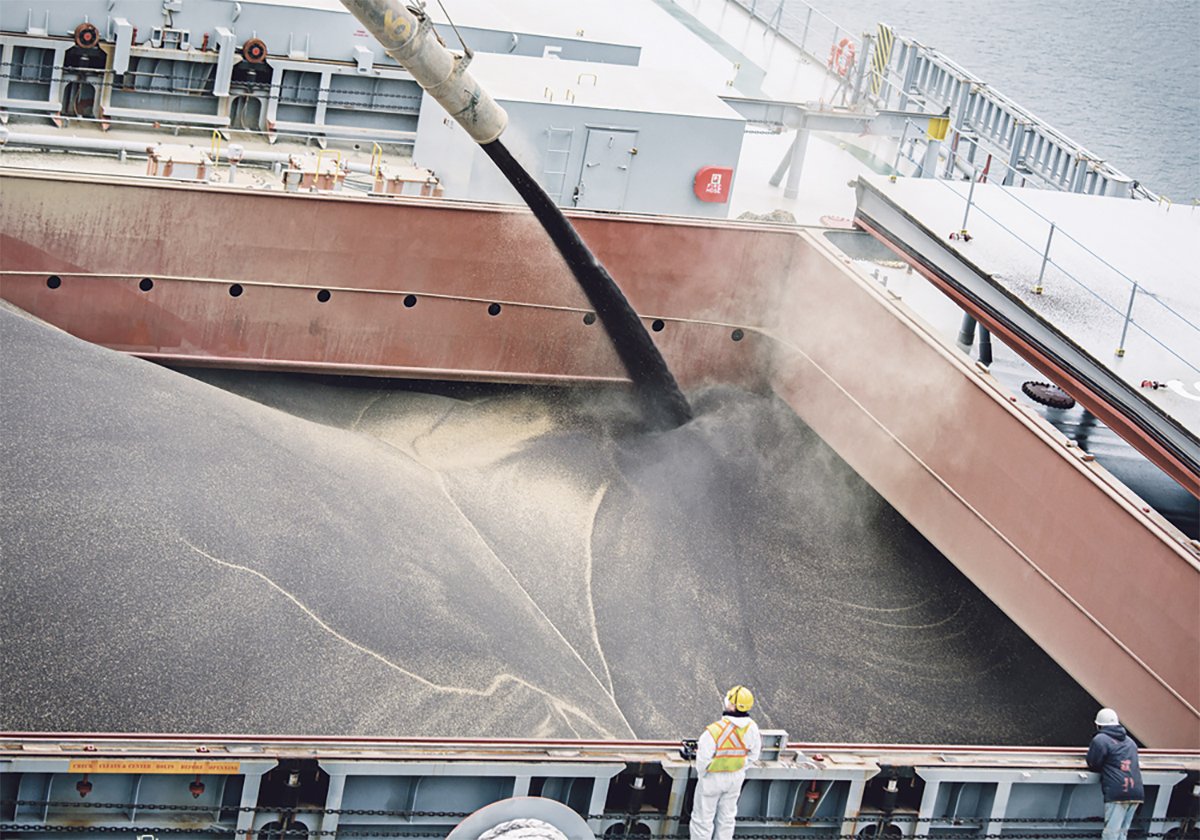This cattle market information is selected from the weekly report from Canfax, a division of the Canadian Cattle Association. More market information, analysis and statistics are available by becoming a Canfax subscriber by calling 403-275-5110 or at www.canfax.ca.
Fed market stable
After trending lower over the past month, the market found some stability with weighted average prices advancing $1.50-$2 per hundredweight. Western Canadian packers are still running lighter slaughter rates.
Read Also

Exports off to a slow start after last year’s torrid pace
Canadian grain, oilseed and pulse exports are off to a slow start, but there are some bright spots, according to the Canadian Grain Commission’s most recent weekly export data report.
Light trade was reported last week with dressed sales at $428 per cwt. delivered. Last week’s Alberta fed cash-to-futures basis was reported at +$6.80 per cwt. For the middle of July, this is the second strongest basis on record. The only year stronger was 2018.
Buying interest was noted from all three western Canadian packers. A higher percentage of dark cutters could be related to warmer temperatures and more heifers entering the slaughter mix.
In Ontario, dressed sales were at $415 per cwt. delivered, fully steady with the previous week. For the week ending July 13, eastern Canadian slaughter totalled slightly less than 11,000 head, the second largest fed slaughter volume over the past year. Ontario steer carcass weights dropped to 982 pounds in the week ending July 13, down 39 lb. from the June peak but still 41 lb. heavier than last year.
Lighter slaughter rates during late spring/early summer are a little concerning. This could result in more market-ready cattle hitting the fourth quarter market. With lower feedgrain prices and record high breakevens on incoming cattle, many are opting to add additional days to their market-ready cattle.
In the United States, dressed sales in Iowa and Nebraska were at mostly US$310 per cwt., steady to $5 per cwt. lower than the previous week. Live sales in the north were at $196 per cwt., $2 per cwt. weaker, while sales in Texas and Kansas were at $188 per cwt., fully steady.
Last week, U.S. beef production was estimated at 492 million lb. For the middle of July, this is the smallest production since 2016.
Cow price rebounds
Cull cow prices rebounded higher last week on seasonally light auction volumes. Alberta D2 cows were $5 per cwt. higher to $188.36 per cwt., with Alberta D3 cows climbing $4 per cwt. to $173 per cwt. Rail grade cows ranged from $370-$385 per cwt., a significant pop from the previous week.
Cull cow prices are expected to drift lower over the next several weeks, but strong lean trim prices may provide support.
Western Canadian cow slaughter last week was 4,100 head, the smallest for this week since 2004. Year to date, western Canadian cow slaughter is 10 per cent smaller than last year.
The Canadian drought monitor (as of June 30) shows little in the way of drought conditions in Saskatchewan and Manitoba. Alberta is slightly drier. Moderate drought is seen in all directions within 100 kilometres of Lacombe. Northeastern British Columbia is under extreme to exceptional drought.
Most pastures across Alberta are in good shape compared to last year and historical averages. As of July 16, 63 per cent of Alberta pasture growth was rated good to excellent. Pasture growth conditions are all above the five-year average, except in the central region.
Low auction volumes
Alberta auction volumes were close to 11,000 head last week and continue to run small. Feeder steers traded mostly stronger across the board, $3-$7 per cwt. higher compared to the previous week. Only 500-700 lb. steers traded steady to $3 per cwt. softer than last week.
Heifers traded $7-$14 per cwt. stronger across all weight classes with only 800-900 lb. trading $4 per cwt. weaker.
The general market tone for the past few weeks has been steady to stronger. Weaker feedgrain prices over the past five weeks have supported the feeder market, having dropped by $14.50 per tonne. Historically, barley prices have seasonally moved lower until the second half of August or early September (depending on harvest), after which they strengthen through the end of the year.
For the short holiday week ending July 6, Canadian feeder exports to the U.S. were 1,561 head, down 40 per cent from the previous week. From the West, exports were 372 head, the smallest weekly total for the year and the lowest in the past five years, while exports from the east were at 1,189 head.
Year-to-date exports stand at 87,326 head, up seven per cent from last year.
Cutouts soften
In U.S. beef trade, after a spring rally from early May into the first week of July, cutouts seasonally softened. Choice and Select cutouts closed the week down either side of 1.5 per cent, with Choice just above US$316 per cwt. and Select slipping below the $300 per cwt. mark.
















